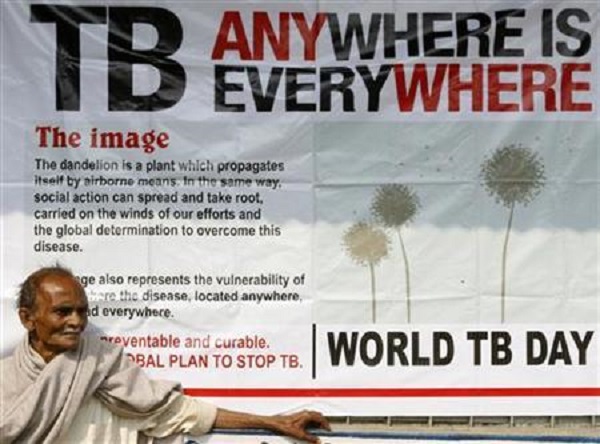World Tuberculosis Day is observed on 24 March each year to raise awarenesss against the epidemic that has plagued humankind for the last 133 years. Despite a cure, there are 3 million people living with TB across the world and 1.5 million dying from it each year.
For World TB Day 2015, the United Nations, the Stop TB Partnership and the World Health Organisation have urged governments and health organisations worldwide to put in place political and social commitment to eradicate the disease as a public health burden.
Aiming at this, UN has set its World TB Day 2015 slogan as "Reach the 3 Million: Reach, Treat, Cure Everyone" – to ensure that the 3 million who are living with the disease are treated.
On 24 March, 1882 Professor Robert Koch announced his discovery of the cause of TB, Mycobacterium tuberculosis. More than a century later, despite having an effective cure available, the disease continues to wreak havoc globally as it remains one of the most common causes of death from an infectious disease worldwide.
TB an Epidemic
As per WHO figures, the largest number of new TB cases get reported in the South-East Asia and Western Pacific Regions, accounting for 56% of new cases globally.
Africa, on the other hand, has the highest proportion of new cases per population with 280 cases per 1,00,000 population.
Some countries are experiencing a major decline in cases, while in others the numbers are dropping very slowly. Brazil and China for example, are among the 22 countries that showed a sustained decline in TB cases over the past 20 years. In the last decade, TB prevalence in Cambodia fell by almost 50%.
India has a "massive TB crisis"
India's fight against TB seems to be on a failing ground as it has emerged that India accounts for an estimated 2.2 million of the 8.6 million new cases of tuberculosis that occur globally each year, according to the World Health Organisation.
An AFP report, citing an article by Zarir F Udwadia - a doctor at PD Hinduja National Hospital and Medical Research Centre - noted the government's TB programme failure to monitor the country's "exploitative" private health sector as the major factor that led to the "massive TB crisis" in India.
Similarly, Dr Sameer Garde - Pulmonologist from Global Hospitals in Mumbai - notes in another report that "India is fighting a TB epidemic".
Facts about Tuberculosis
- Tuberculosis (TB) is second to HIV/AIDS as the greatest killer worldwide due to a single infectious agent.
- Over 95% of TB deaths occur in low- and middle-income countries.
- TB is among the top 5 causes of death for women aged 15 to 44.
- There were an estimated 500,000 cases and 74,000 deaths among children in 2012.
- Tuberculosis is particularly difficult to diagnose in children.
- More than half of Multidrug-resistant tuberculosis (MDR-TB) cases are reported in India, China and the Russian Federation. The primary cause of MDR-TB is inappropriate treatment. Inappropriate or incorrect use of anti-TB drugs, or use of poor quality medicines, can all cause drug resistance.
- Tobacco use greatly increases the risk of TB disease and death. More than 20% of TB cases worldwide are attributable to smoking.




















